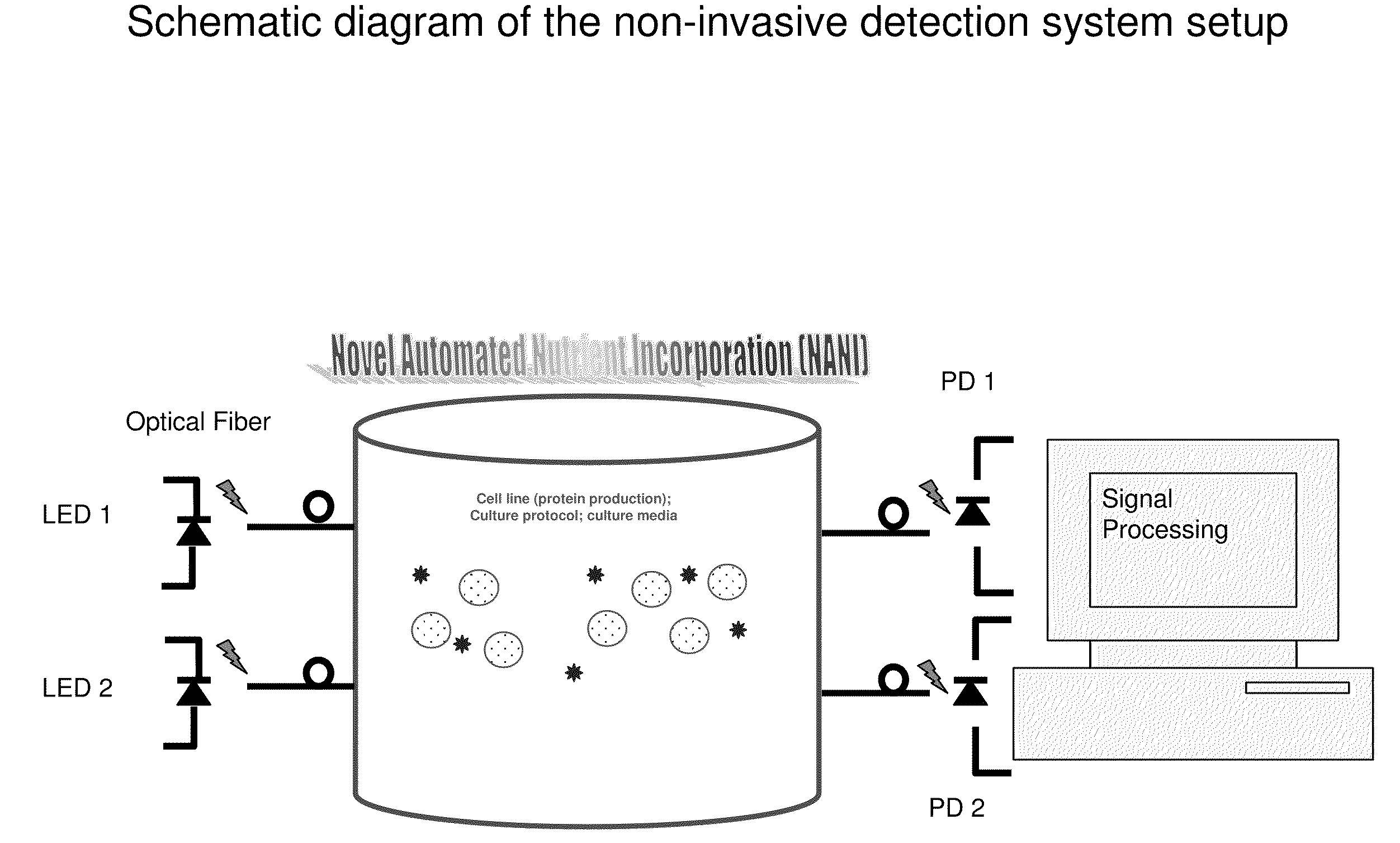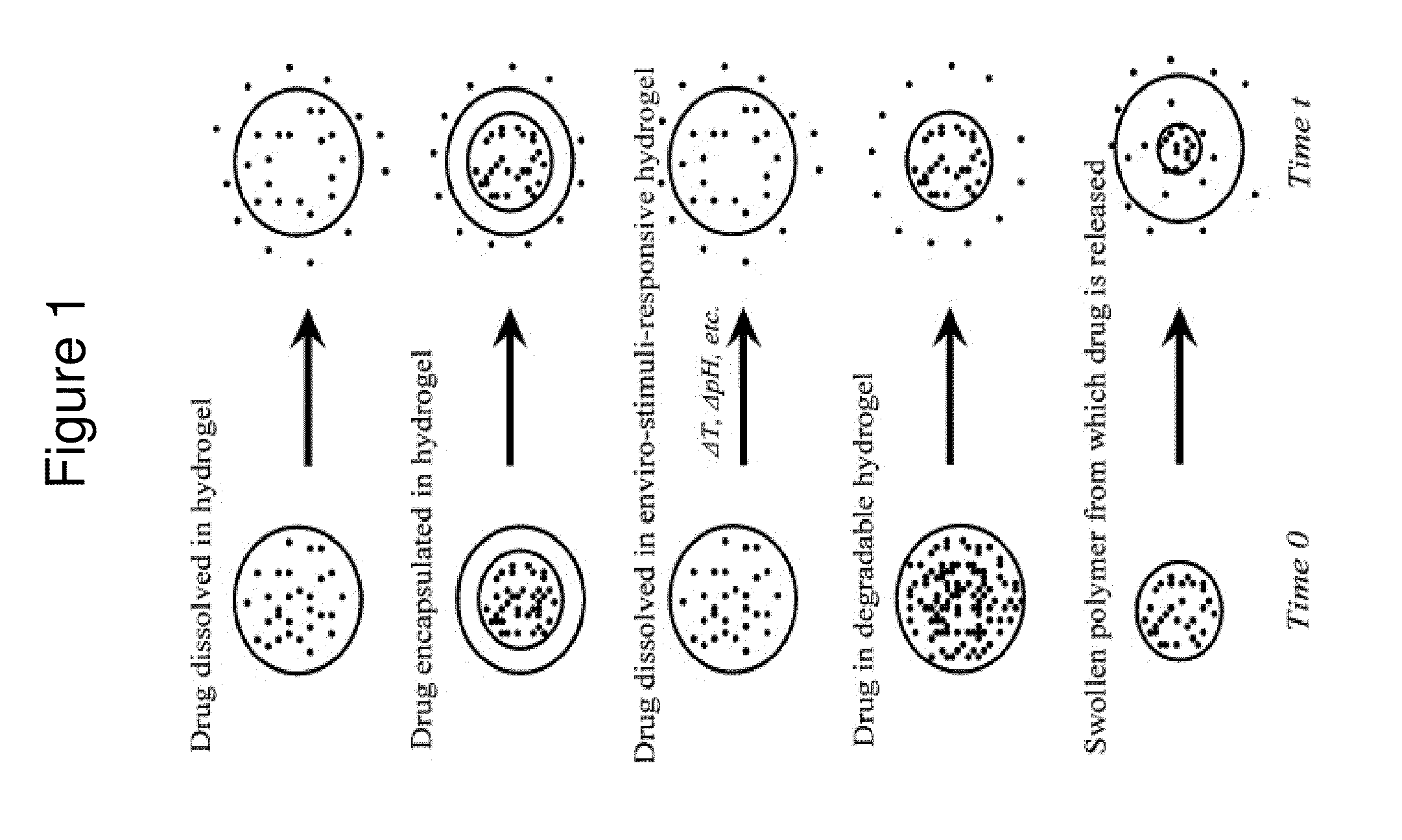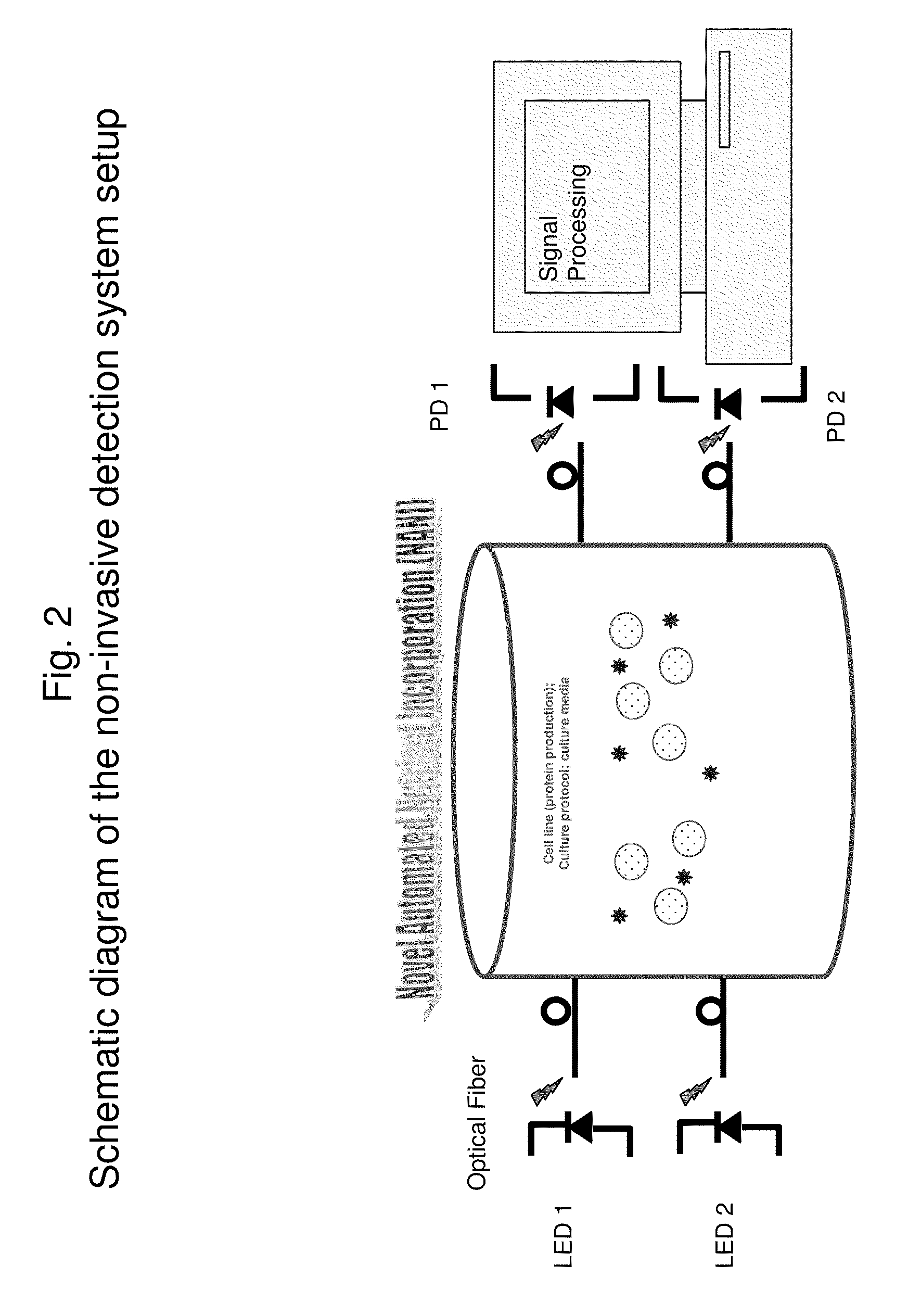CELL CULTURE HYDROGEL WITH pH INDICATOR
- Summary
- Abstract
- Description
- Claims
- Application Information
AI Technical Summary
Benefits of technology
Problems solved by technology
Method used
Image
Examples
example 1
Autoregulation of pH Level in a Cell Culture Using the Cell NANI Hydrogel System
[0251]SA13 cells and Cell NANI hydrogel cubes were added to three cell culture plates with media. Three control cultures were also started. Over the course of a 4 day incubation period, small amounts of cell culture media were removed from the plates and analyzed to determine the pH level of the media.
[0252]As can be seen in FIG. 3, the cell cultures with the Cell NANI hydrogel system maintained pH values close to the optimal pH of 7.05 throughout the entire 96 hour incubation period. In the control cultures, however, pH levels had already begun to drop even before the first 24 hours of incubation had finished. The pH levels continued to drop throughout the incubation, becoming significantly acidic with a sub-optimal pH (around pH 6.8) by approximately hour 27.
[0253]FIG. 4 shows the pH levels from the three Cell NANI cultures in this experiment on a graph with a much narrower range of pH values, from 7.0...
example 2
Effects of the Cell NANI Hydrogel System on Media Glucose Levels, Cell Density and Cell Viability
[0256]In this experiment, multiple cell culture plates were seeded with SA13 cells and half of the cultures received Cell NANI hydrogel cubes. The plates were incubated for 96 hours. At regular intervals, the cultures were examined under a microscope and small amounts of media were removed from the plates and analyzed for glucose content. Additionally, at regular intervals, a cell counting procedure was performed on one plate each from the hydrogel cultures and the control cultures to determine cell density and viability. The results of the media analysis and cell counts are presented in FIGS. 5-7.
[0257]As shown in FIG. 5, glucose levels began to drop in the control cultures soon after the cultures were started and had fallen well below the optimal minimal glucose concentration (approximately 3.0 g / L) by hour 48. The glucose levels continued to drop steadily in the control cultures; by h...
PUM
 Login to View More
Login to View More Abstract
Description
Claims
Application Information
 Login to View More
Login to View More - R&D
- Intellectual Property
- Life Sciences
- Materials
- Tech Scout
- Unparalleled Data Quality
- Higher Quality Content
- 60% Fewer Hallucinations
Browse by: Latest US Patents, China's latest patents, Technical Efficacy Thesaurus, Application Domain, Technology Topic, Popular Technical Reports.
© 2025 PatSnap. All rights reserved.Legal|Privacy policy|Modern Slavery Act Transparency Statement|Sitemap|About US| Contact US: help@patsnap.com



